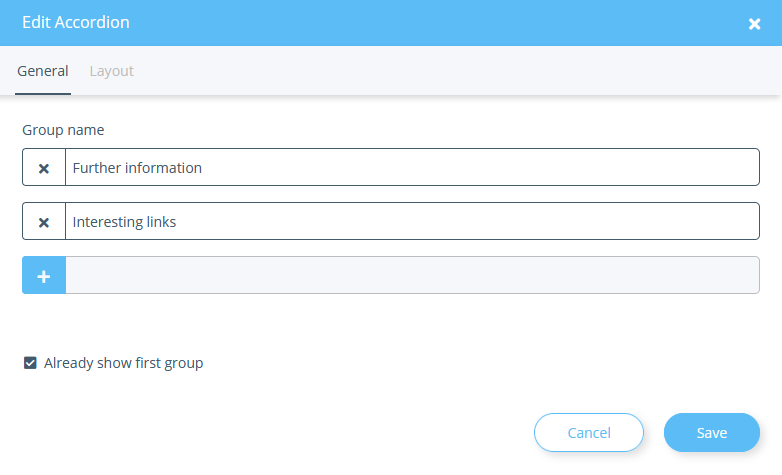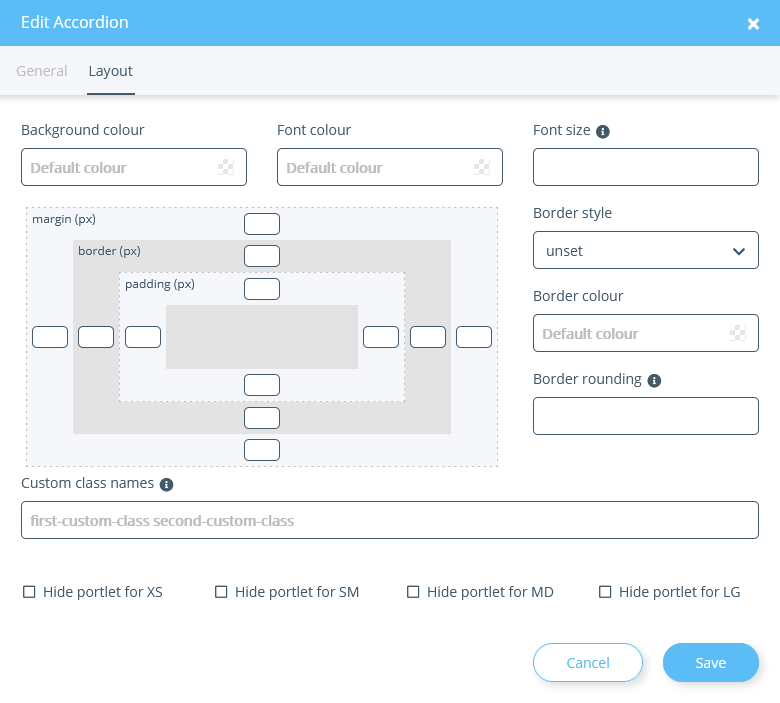We are currently still building up the English documentation; not all sections have been translated yet. Please note that there may still be German screenshots or links to German pages even on pages that have already been translated. This guide mostly addresses English speaking users in Germany.
Inserting accordions with the OnPage Composer
Your task/initial situation
Inserting an accordion
- Log in to the back end of JTL-Shop and switch to the front end of JTL-Shop.
- Open the page you want to edit and click the OnPage Composer icon at the top left of the page to open the OnPage Composer for that page.
- Drag the Accordion portlet to the desired position in the OnPage Composer.
- Click on the pencil icon to open the window Edit Accordion .
- Under Group name, enter the name you want to appear on the accordion tab.
- If necessary, add more accordion tabs via the plus symbol.
- Use the check box Already show first group to select whether the first accordion tab should already be expanded when the page is loaded.
- Save the settings. Then add more portlets to the accordion tabs to fill them with the desired content. You can easily switch between the tabs by clicking on their names.
- Follow the further steps to preview and publish an edited page at Editing pages with the OnPage Composer.
Layout tab
Background colour: Here you can set a colour to be displayed in the background of the accordion.
Font colour: Here you can set the colour of the font for the accordion. This setting has no effect on accordions.
Font size: Here you set the size of the font. Enter a CSS value here, e.g 5px, 0.5em, etc. This setting has no effect on accordions.
Border style/Border colour: Here you can specify whether the accordion should have a border and what colour it should be.
Border rounding: Here you can specify whether the border should be rounded. You can specify the distance from the corner at which the rounding will start. You must specify a border style before you can do this. Enter a CSS value, e.g 5px, 0.5em, etc.
Custom class names: Enter here the class names to be appended to the class attribute of the portlet. The names you assign here can be, for example, CSS classes that are defined in the theme of the template.
Hide portlet: Select here whether the portlet should be hidden when viewed on certain end devices. XS stands for mobile phones, SM for tablets, MD for desktop computers and LG for large desktop computers.
Margin: Here you can set for each page how much space in pixels should be between the element and the (imaginary) edge. The element is reduced/moved accordingly.
Border: Here you can set the size of the frame in pixels for each page.
Padding: Here you can set for each page how much space in pixels should be between the element and the (imaginary) edge.
Related topics


